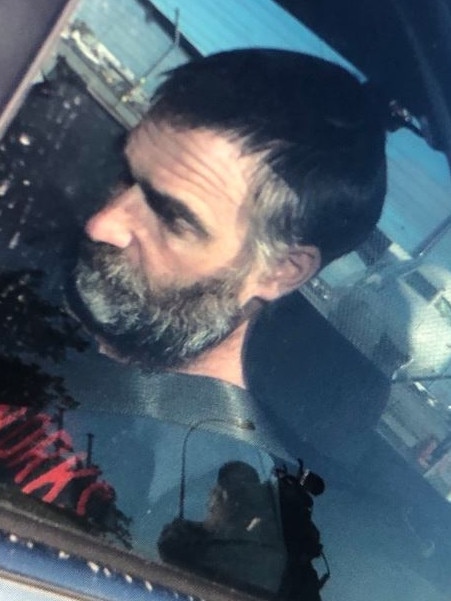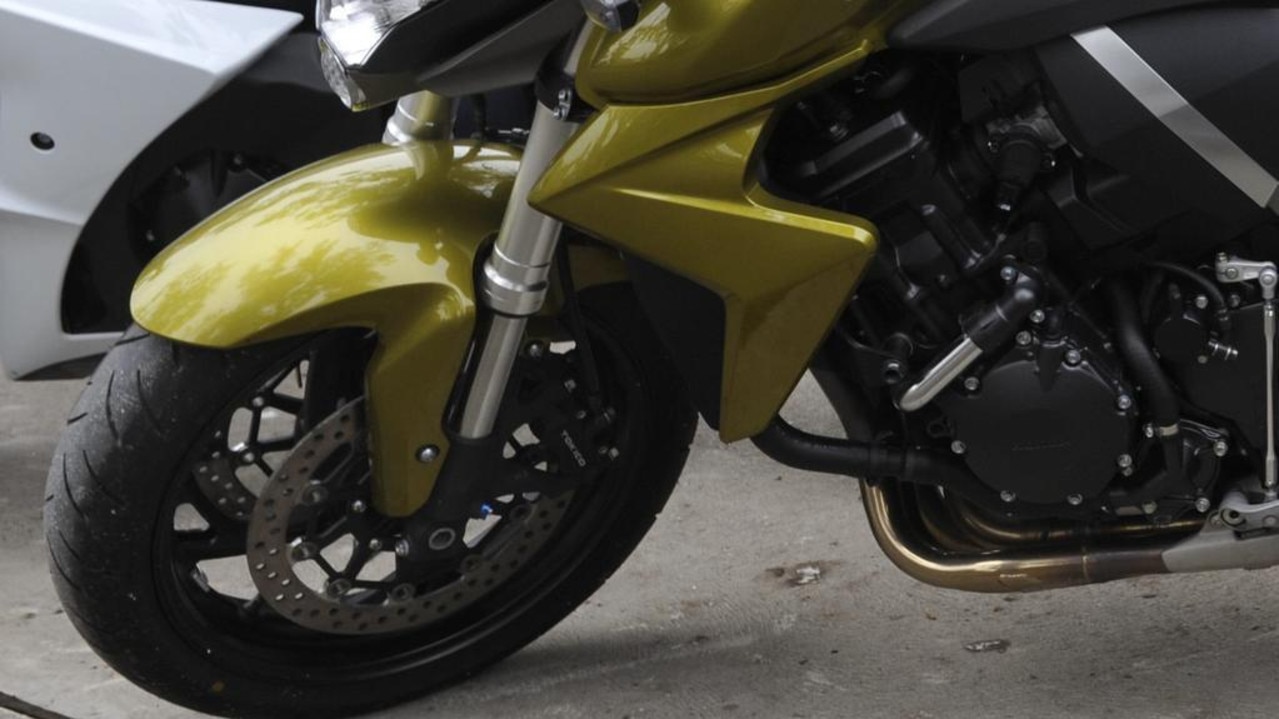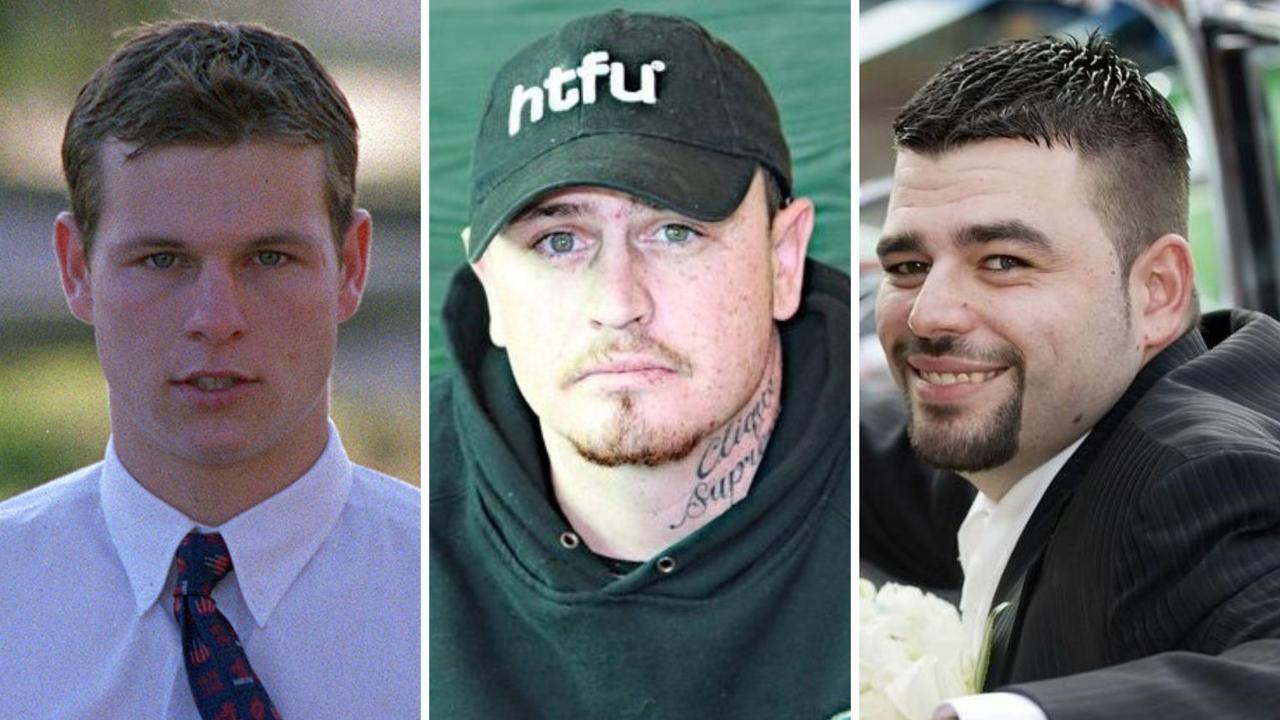Blood dripping from the ceiling as maggots infested forensic building
Imagine coming into work in on a Monday morning and finding this on your desk. WARNING: Graphic content

Police & Courts
Don't miss out on the headlines from Police & Courts. Followed categories will be added to My News.
This shocking image was one of the catalysts that convinced the state government to spend $349m building a new forensic science centre.
The stomach-churning photograph was taken in a basement office of Forensic Science South Australia’s city premises after blood and bodily fluids from a corpse seeped through the mortuary floor above, into the ceiling space and finally on to the desk below.
The incident – and others including maggot infestations in walls and a lunchroom, putrid smells permeating work spaces and family visiting areas and mould growing on sensitive police files – were used in the business case for the new state-of-the-art facility to house FSSA and SA Police’s Forensic Services Branch.
FSSA director John Doherty said the sickening blood seepage incident occurred over a weekend when gases in the body of a “very large gentleman’’ expanded and forced blood and bodily fluids to be expelled over several days.
“The bariatric trolleys do have essentially a trough that collects any fluids that may leak from the bodies when they are in our care,’’ Mr Doherty said.
“But in this case over a weekend he released a lot of fluid and because of his size the tray was not able to capture all of the fluids.
“Like any liquid, it will find cracks and crevices and opportunities to seep through and that’s what happened in this case. It pooled and eventually seeped through the ceiling over the weekend.’’
Mr Doherty said the incident was “absolutely one of the examples that was cited to government within the business case for a new facility’’ because the existing one was “no longer fit for purpose.’’
While there was only one incident involving blood and fluid seepage, a source said “flies and maggots were a constant problem.’’
“Unfortunately they come in on some of the bodies and because the building is not sealed, they spread throughout,’’ the source said.

“It has not been an ideal situation for work that has to be conducted in a clean, sterile environment and workflows have been slowed because of this, because of the extra care people have had to take to ensure their work has not been compromised.’’
After several years of scrutiny by successive governments, in the state budget the Malinauskas government committed $348.9m to build the new facility – rather than refurbish the existing Divett Place building.
Renewal SA is currently searching for a 20,650sq m parcel of land – 12,617sq m of which will be the building size – and last month a procurement document was issued seeking expressions of interest for the design and construction of the new facility.
Mr Doherty said the existing building was now more than 40 years old and had “outlived its life.’’
“It has been refurbished during that time, but we are clearly now at the point our workflows have to fit the building and that doesn’t really make sense in a modern forensic laboratory. We need the building to actually fit what our workload is going to be,’’ he said.
“If you think about when this building was first occupied, no-one was doing DNA testing in the forensic world.


“The building wasn’t built with DNA testing in mind and that is now a major part of the work for any modern forensic laboratory. We need a facility that is modern and can accommodate the various requirements for minimising contamination and maximising the recovery of evidence.
“The suites we have here have been refurbished, but probably at the expense of the workflow.’’
Mr Doherty said if a new facility was not built the reputation of FSSA would potentially have been at risk in future.
“When people start talking about which are the world-class facilities, I am pretty sure we would not have made the list,’’ he said.
In the past decade FSSA has been at the forefront of DNA research with its technology now used worldwide – particularly to solve cold case homicides.
One of its most notable success in SA was using the fledgling familial DNA testing to solve the 1993 murder of Suzanne Poll. The case was solved when FSSA scientists used the DNA of killer Matthew Tilley’s brother to link him to blood found at the crime scene.
Opposition legal affairs spokesman Josh Teague said the images were “what you expect to see in a run-down third-world country hospital during a war conflict.’’
“To think there was a team of world-leading forensic scientists working in these conditions – confronted with blood on workstations and maggots crawling across the lunchroom floor – is appalling,’’ he said.
“That’s why the second the former government was made aware of these horrors in late 2021, a working group was established to investigate options for a new facility. The full business case to inform a final option was on track at the time of the election.’’




